
|
|
Abstract: Passing mentions of the Bab, Bahá'ís, and Subh-i-Azal, along with the history and geography of Akka. Includes estimate of number of Bahá'ís in Palestine in 1922. Notes: This book is online in a variety of formats at archive.org. |
The Handbook of Palestine
by Harry Charles Luke
pages 33, 58-59, 105, 107London: Macmillan and Company, 1922
1. Text
[page 33]... The population of Palestine (exclusive of Trans-jordania and exclusive of the British garrison) is estimated as follows (1922):
Moslems - - - - 583,188
Christians - - - - 84,559
Jews - - - - 79,293
Druses - - - - 7,034
Metawileh - - - - 160
Bahá'ís - - - - 158
Samaritans - - - - 157
---
Total - 754,549 |
[page 58]
Part II., § 18. The Bahá'ís
In 1844 a Persian, Mirza 'Ali Mohammed, proclaimed himself in Tabriz as the 'Bab,' or Gate, whereby communication was to be re-established with the 'hidden' or Twelfth Imam, or Mahdi, whose return to earth is awaited by a large number of Shiah Moslems. Later he stated that he himself was the expected Imam, but his ministry was cut short by martyrdom in Tabriz in 1850. Before his death he appointed as his successor a lad named Mirza Yahya, called Subh-i-Ezel ('the Dawn of Eternity'), who, with his half-brother Mirza Husein 'Ali, afterwards better known as Bahá'u'lláh, and other Babi leaders, took refuge in Baghdad in consequence of the persecution to which the sect was subjected by the Shah. After they had spent twelve years in Baghdad the Persian Government persuaded the Porte to have them removed, and they were taken to Adrianople, where they remained from 1864 to 1868. In A.H. 1283 (A.D. 1866-67) occurred an event which rent the sect in twain. Bahá'u'lláh, who was of more assertive character than the retiring Subh-i-Ezel, suddenly announced that he himself was the expected Imam, and that the 'Bab' had
[page 59]
been no more than his fore-runner; and he called upon all Babis, including Subh-i-Ezel, to acknowledge him. This the latter refused to do, and Babis were now divided between Ezelis, who acknowledged the original Bab and his successor Subh-i-Ezel, and Bahá'ís, or followers of Bahá'u'lláh. Meanwhile both sections were again deported by the Turks, Subh-i-Ezel and his family to Famagusta in Cyprus, Bahá'u'lláh and his followers to Acre. From Acre the Bahá'í faith has spread over Asia and America and into Europe, and counts two millions of adherents; the Ezelis have dwindled to a handful.
Bahá'u'lláh died on the 16th May, 1892, leaving, among other children, two sons, 'Abbas Effendi and Mirza Mohammed 'Ali, who for a while disputed the succession. Ultimately there prevailed the claims of the elder, 'Abbas Effendi, who took the spiritual title of 'Abdu'l Baha, meaning 'The Servant of the Glorious.' 'Abdu'l Baha was born in Teheran on the 23rd May, 1844, the day of the Declaration of the Bab, and died at Acre on the 27th November, 1921. His successor is his grandson, Shawki Effendi, who is Life-President of the Council of Nine, which regulates the affairs of the community. The number of Bahá'ís in Palestine is 158. Sir 'Abbas Effendi 'Abdu'l Baha had travelled extensively in Europe and America to expound his doctrines, and on the 4th December, 1919, was created by King George V. a K.B.E. for valuable services rendered to the British Government in the early days of the Occupation. For farther information on Babism and Bahá'ism the reader is referred to the works of Professor E.G. Browne, published by the Cambridge University Press.
[page 105]
Acre. — The varied history of Acre has been touched upon in Part I., §§ 5 and 6. It is mentioned only once in the Old Testament (Judges, i., 31), under the name of Accho, and once also in the New Testament (Acts, xxi., 7), under its Greek name of Ptolemais. According to the Talmud the Jews regarded Acre as being outside the confines of the Holy Land, whose frontier was its outer wall. The town became of importance during the Crusades, and was the favourite seat of the Court of the Latin Kingdom. On the fall of Jerusalem it succeeded that city as the capital and as the headquarters of the Knightly Orders, owing its full name of S. Jean d'Acre to the Knights Hospitallers. It was for several years, until its fall in May, 1291, the last outpost of the Crusaders in Palestine.
Even after the disappearance of the Franks Acre remained the usual landing-place for Christian pilgrims from the West. In more recent times it has stood several sieges, notably by Napoleon in 1799; was captured by Ibrahim Pasha in 1831; and was bombarded in 1840 by the British, Austrian and Turkish fleets under Stopford and Napier. In later Turkish times Acre was the capital of the Sanjaq which bore its name. Its connexion with the Bahá'í sect is described in Part II., § 18 [above].
[page 107]
... About half a mile to the east of the walls is Tel al-Fukhar, where King Richard pitched his tent in 1190-1; from this place Napoleon directed operations in 1799. About one mile to the north-east is the village of Menshieh, where was the French Camp, and close by are the orange gardens of Baghche and the tombs of Bahá'u'lláh and Sir Abbas Effendi 'Abdu'l Baha. Across the plain to the north can be traced the aqueduct — rebuilt by Jezzar and 'Abdallah, probably on the ruins of a Roman aqueduct — conveying the water a distance of 8 miles into Acre. To the north-east on the hillside can be seen the late Arab castle of Jeddin, and to the north the white cliff of Ras al-Nakura (the boundary between Palestine and Syria) and the beginning of the "Ladder of Tyre." The beautiful Wadi Qurn, well wooded and with a strongly flowing stream, deserves a visit, together with the ruins of the Crusaders' castle of Montfort (Qala'at Qurein). This castle of Mons Fortis was begun in 1229 by Hermann von Salza, the Grand Master of the Teutonic Order, and was the principal strong-hold of the Order in Palestine. It was destroyed by Bibars.
Acre is connected with Haifa by a narrow-gauge railway, which crosses the rivers Kishon (Nahr Muqatta) and Belus (Nahr Na'mein). The latter provided and still provides the murex, from which the Phoenicians extracted the famous Tyrian purple; and Pliny records that glass was made from its exceptionally fine sand.
There is a local prophecy to the effect that when the waters of the river Belus reach the east gate of Acre the English will take the town. This possibility arose from the fact that Belus changes his course every year. In 1910 the river approached so close to the gate that, in view of the prophecy, the Turkish authorities became anxious. Numbers of sheep were publicly sacrificed on the spit of land between the river and the gate, and that winter Belus moved himself away from the walls.
2. Image scans (click image for full-size version)
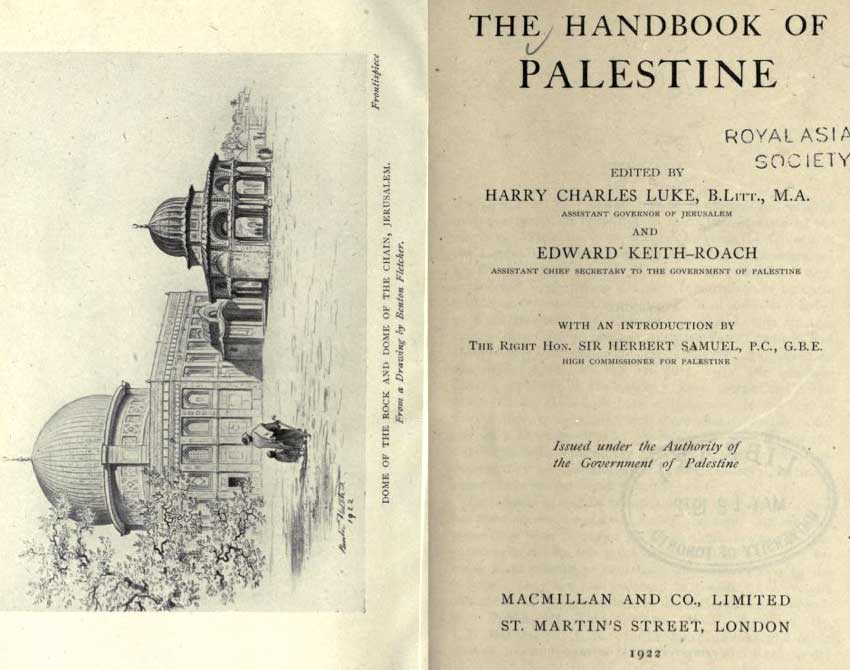
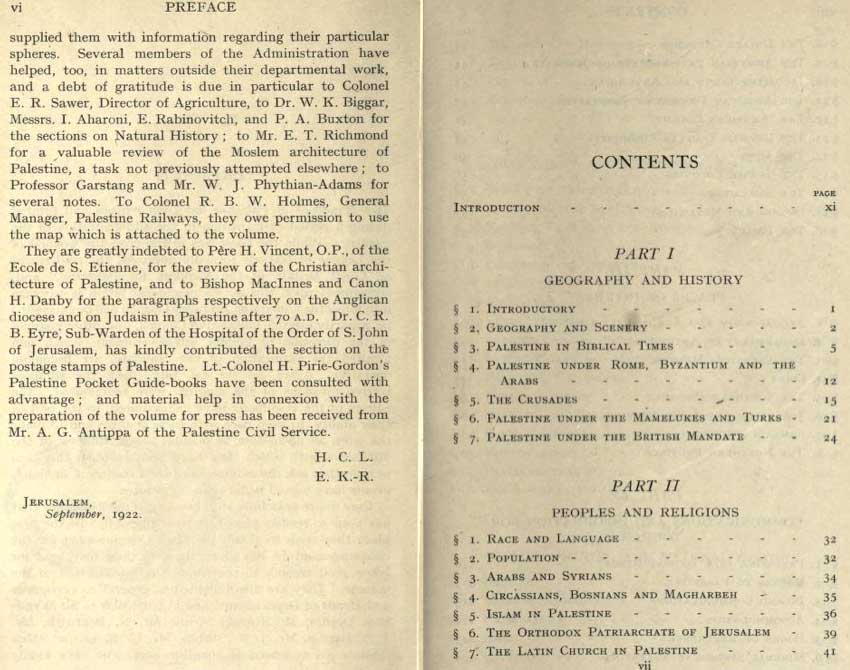
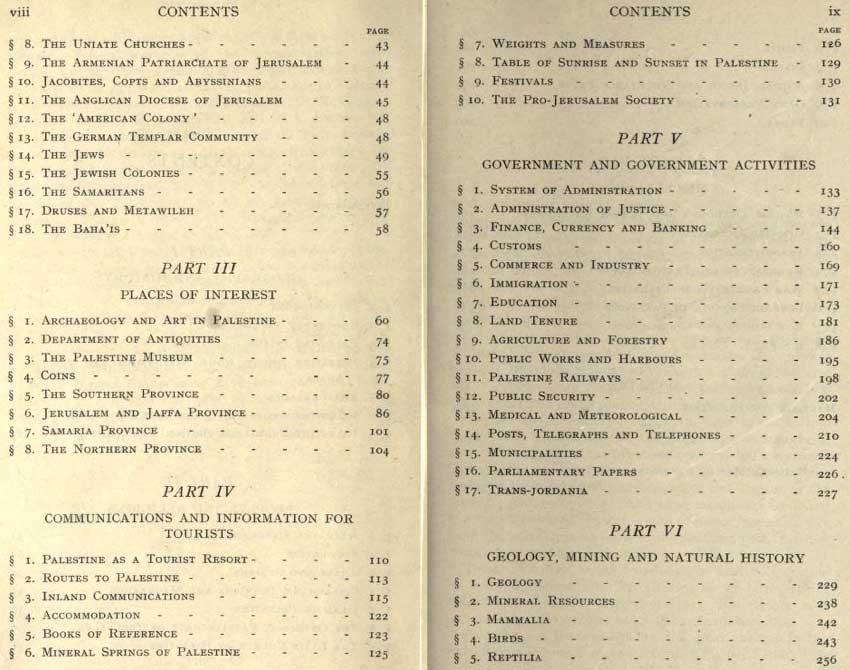

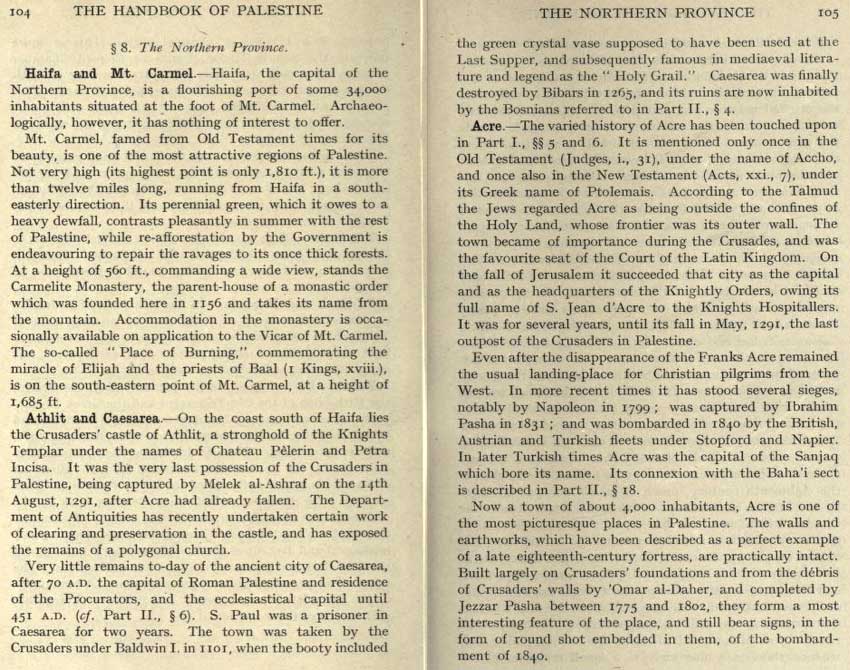
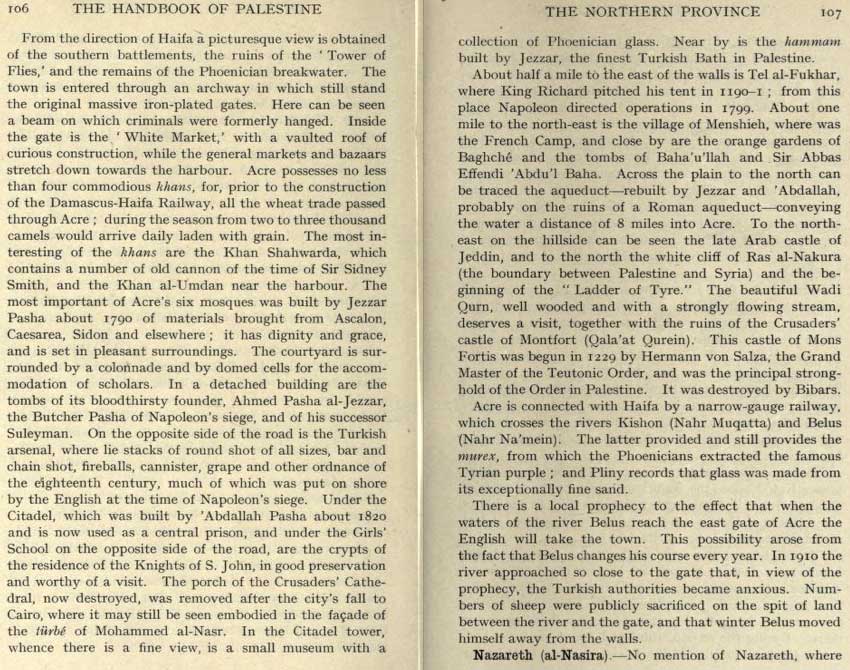
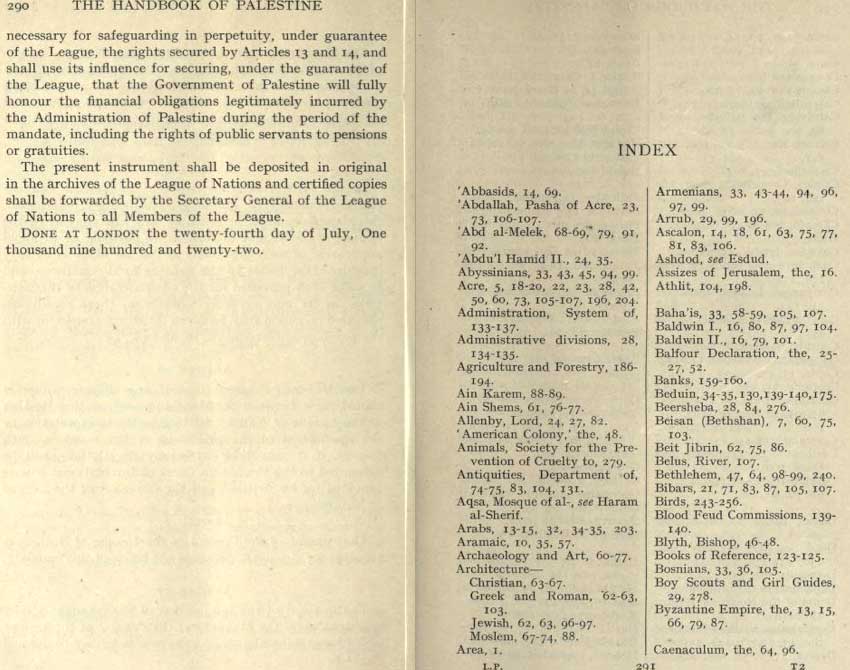
|
|